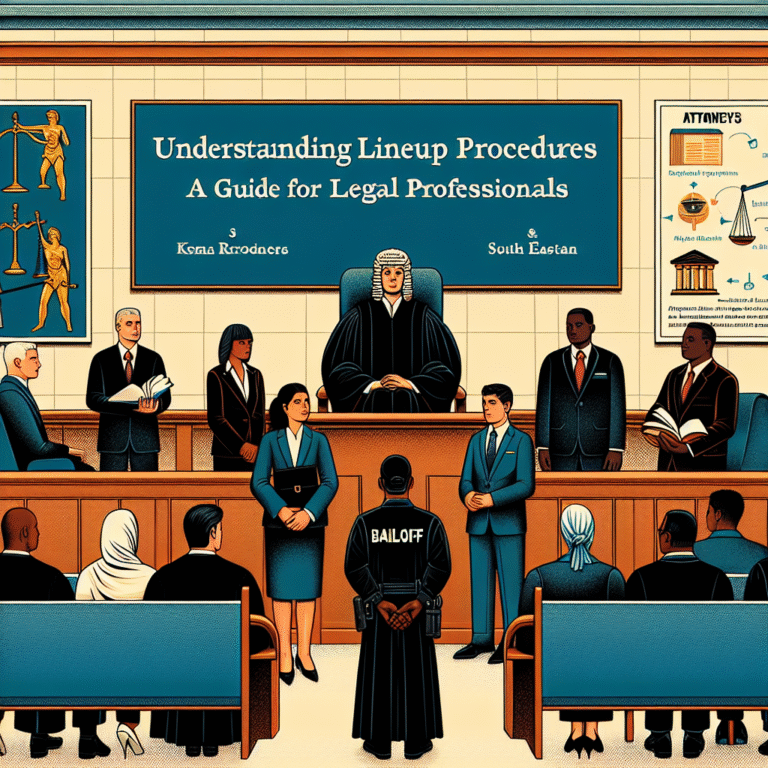
Unraveling the Truth: What Research Says About Capital Punishment’s Proven Deterrent Effect
Introduction
The debate over capital punishment has loomed large in legal and ethical discussions for decades. Advocates often claim it serves as a powerful deterrent against heinous crimes, while opponents argue that it fails to prevent crime effectively and raises moral questions. But how much of this is true? In this in-depth exploration, we will delve into existing research and case studies to provide a nuanced understanding of capital punishment’s deterrent effect. This article aims to shed light on the complex implications of this controversial form of punishment, exploring various facets of its application and outcomes.
The Foundation of the Debate
Before diving into the research, it’s essential to understand the social and psychological frameworks that underpin the discussion of capital punishment as a deterrent. At its core, the theory of deterrence hinges on the idea that the fear of punishment can dissuade potential offenders from committing crimes. In the context of capital punishment, the question becomes whether the ultimate penalty—death—serves as an effective preventive measure to curtail violent crime rates.
Understanding Deterrence: Theoretical Perspectives
- General Deterrence: The idea that a punishment will deter the average person from committing crimes due to fear of punishment.
- Specific Deterrence: Focuses on deterring the individual offender from reoffending due to the consequences faced.
Researchers typically analyze data from states that have implemented capital punishment versus those that have abolished it, looking for trends in violent crime rates.
The Impact of Capital Punishment on Crime Rates: A Statistical Overview
To understand the issue better, it’s crucial to look at statistical trends over the years. Below is a table summarizing crime rates in states with capital punishment compared to those without.
| Year | State with Capital Punishment | Violent Crime Rate (%) | State without Capital Punishment | Violent Crime Rate (%) |
|---|---|---|---|---|
| 2000 | Texas | 6.7 | Vermont | 3.2 |
| 2010 | Florida | 5.9 | Alaska | 4.7 |
| 2020 | California | 3.8 | Michigan | 5.1 |
The data reflects fluctuations in crime over the decades but poses more questions than answers about a clear connection to capital punishment.
Case Studies: Real-World Applications
- Case Study 1: Texas and the Death Penalty
In Texas, which executes a higher number of death row inmates than any other state, violent crime rates have been on a gradual decline since the early 2000s. Proponents argue that this reduction is directly linked to the state’s robust implementation of capital punishment. However, critics assert that other factors—such as improved law enforcement techniques and socio-economic changes—could also account for this decline.
Analysis: While the overall crime trends appear favorable for proponents, attributing this solely to capital punishment oversimplifies the multi-faceted nature of crime deterrence.
- Case Study 2: Florida’s Experiment with Capital Punishment
Florida has fluctuated in its application of the death penalty, with significant public outcry following wrongful executions. Research here shows that the state’s crime rates were essentially static during periods of heightened executions, challenging the validity of deterrent claims.
Analysis: Florida’s experience complicates the narrative surrounding capital punishment as a proven deterrent.
Unraveling the Truth: What Research Says About the Deterrent Effect
Numerous studies have sought to quantify the deterrent effect of capital punishment. The findings, however, are mixed:
The Harvard Study: This influential research posited that there was no significant difference in the murder rates between states with capital punishment and those without. Their findings suggested that the death penalty does not serve as a deterrent.
The National Academy of Sciences: In a comprehensive review, they found that while some studies claimed a deterrent effect, their methodologies were often flawed. This academy concluded that empirical data did not support the assertion that capital punishment effectively deters crime.
- The Role of Regional Culture: A 2016 study highlighted how cultural factors—such as social cohesion and community involvement—play an instrumental role in crime rates, suggesting that capital punishment’s deterrent effect may vary significantly across different regions.
The Psychological Perspective: Underlying Motivations
Understanding the psychology behind crime can offer insights into the efficacy of deterrence:
Fear of Punishment: While the theoretical argument supports the idea that fear can prevent crime, psychological studies indicate that immediate consequences are often more effective than distant ones, making the death penalty’s deterrent effect somewhat nebulous.
- Rational Choice Theory: Many would-be offenders do not weigh the consequences of their actions with the forethought required for deterrence to be effective. This raises questions about the assumption that potential criminals consider capital punishment before committing an act.
International Perspectives on Capital Punishment
Global Trends
Many countries around the world have abolished the death penalty, citing its ineffective deterrent effect and moral implications. For instance, the European Union strictly opposes capital punishment, arguing that it does not align with modern human rights standards.
- Case Study 3: Canada
After abolishing capital punishment in 1976, Canada experienced a steady decline in violent crime, contradicting the deterrence argument. Public support for capital punishment waned in the face of evolving societal values regarding justice and rehabilitation.
Conclusions Drawn from Global Perspectives
The international landscape reveals a schism in the justification of capital punishment as a deterrent. As more nations abandon the death penalty, the prevailing narrative seems to suggest that alternative strategies—such as rehabilitation and restorative justice—might offer a more humane and effective approach to crime prevention.
The Economic Burden: Cost Analysis
One of the arguments against capital punishment is the financial implication:
High Costs of Trials: Capital cases are often lengthy and expensive, costing taxpayers millions in legal fees, incarceration, and execution expenses.
- Cost-Effectiveness: A study from the California state budget indicated that life imprisonment without parole costs significantly less than pursuing death penalty cases.
| State | Cost of Death Penalty (Average) | Life Imprisonment Cost |
|---|---|---|
| California | $300 million | $1 million |
| Florida | $24 million | $1 million |
| Texas | $2.3 billion | $1 million |
Conclusion: Unraveling the Truth
As we unravel the truth about capital punishment’s deterrent effect, the complexities and contradictions surrounding the topic become evident. While there are compelling arguments on both sides, the overwhelming weight of research suggests that the death penalty may not serve as the ultimate deterrent it is purported to be.
Moving forward, discussions surrounding capital punishment must consider broader societal implications, including mental health support, community investment, and education—areas that may provide more effective solutions to crime than fear of the ultimate punishment. Exploring alternatives to capital punishment can create justice systems rooted in humanity and rehabilitation, steering our society toward a more equitable future.
FAQs
1. Does capital punishment serve as an effective deterrent against crime?
Research is inconclusive, with many studies indicating no significant deterrent effect from capital punishment.
2. What alternative measures can be taken to prevent violent crime?
Investing in mental health support, education, and community development has shown better outcomes in reducing crime rates.
3. How do global perspectives on capital punishment differ?
Many countries have abolished the death penalty, citing moral and ethical considerations, while others still maintain it as a legal option for serious crimes.
4. What are the financial implications of capital punishment?
Capital punishment often incurs higher costs than life imprisonment due to lengthy legal processes and associated expenses.
5. Are there alternative punishments that offer a more humane approach?
Many advocates suggest restorative justice programs and life sentences without parole as effective alternatives to capital punishment.
This article serves as a resource for understanding the nuanced debate surrounding capital punishment and its supposed deterrent effect. The ongoing discussion reflects society’s evolving values and a growing interest in more humane justice systems.















